| Years & Congresses | Seat A | | Seat B | | Seat C | | Seat D | | Seat E | | Seat F |
|---|
| Rep. | Party | Electoral history | Rep. | Party | Electoral history | Rep. | Party | Electoral history | Rep. | Party | Electoral history | Rep. | Party | Electoral history | Rep. | Party | Electoral history |
|---|
March 4, 1789 –
June 22, 1789 | 1st | Representative-elect Benjamin West chose not to serve. | 
Nicholas Gilman
(Exeter) | Pro-Admin | Elected in 1789.
Re-elected in 1790.
Re-elected in 1792.
Re-elected in 1794.
Retired. | 
Samuel Livermore
(Holderness) | Anti-Admin | Elected in 1789.
Re-elected in 1790.
Retired. |
|---|
June 23, 1789 –
March 3, 1791 | 
Abiel Foster
(Canterbury) | Pro-Admin | Elected to finish West's term.
Lost re-election. |
March 4, 1791 –
March 3, 1793 | 2nd | 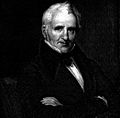
Jeremiah Smith
(Peterborough) | Pro-Admin | Elected in 1790.
Re-elected in 1792.
Re-elected in 1794.
Re-elected in 1796.
Resigned. | Pro-Admin |
|---|
March 4, 1793 –
March 3, 1795 | 3rd | 
John Samuel Sherburne
(Portsmouth) | Anti-Admin | Elected in 1792.
Re-elected in 1794.
Retired. | 
Paine Wingate
(Hampton Falls) | Pro-Admin | Elected in 1792.
Lost re-election. |
|---|
March 4, 1795 –
March 3, 1797 | 4th | Fed | Fed | Dem-Rep | 
Abiel Foster
(Canterbury) | Fed | Elected in 1794.
Re-elected in 1796.
Re-elected in 1798.
Re-elected in 1800.
Retired. |
|---|
March 4, 1797 –
July 26, 1797 | 5th | Jonathan Freeman
(Hanover) | Fed | Elected in 1796.
Re-elected in 1798.
Retired. | William Gordon
(Amherst) | Fed | Elected in 1796.
Re-elected in 1798.
Resigned to become New Hampshire Attorney General. |
|---|
July 26, 1797 –
December 15, 1797 | Vacant |
December 15, 1797 –
March 3, 1799 | Peleg Sprague
(Keene) | Fed | Elected to finish Smith's term.
Re-elected in 1798, but declined to serve. |
March 4, 1799 –
June 12, 1800 | 6th | 
James Sheafe
(Portsmouth) | Fed | Elected to finish Sprague's term.
Retired. |
|---|
June 12, 1800 –
December 8, 1800 | Vacant |
December 8, 1800 –
March 3, 1801 | 
Samuel Tenney
(Exeter) | Fed | Elected August 25, 1800 to the next term.
Elected October 27, 1800 to finish Gordon's term.
Re-elected in 1802.
Re-elected in 1804.
Lost re-election. |
March 4, 1801 –
?, 1802 | 7th | George B. Upham
(Claremont) | Fed | Elected in 1800.
Retired. | Joseph Peirce
(Alton) | Fed | Elected in 1800.
Resigned. |
|---|
?, 1802 –
December 6, 1802 | Vacant |
December 6, 1802 –
March 3, 1803 | Samuel Hunt
(Keene) | Fed | Elected August 30, 1802 to finish Peirce's term.
Elected August 30, 1802 to the next term.
Retired. |
March 4, 1803 –
March 3, 1805 | 8th | 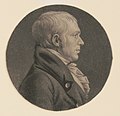
Silas Betton
(Salem) | Fed | Elected in 1802.
Re-elected in 1804.
Lost re-election. | David Hough
(Lebanon) | Fed | Elected in 1802.
Re-elected in 1804.
Lost re-election. | Clifton Clagett
(Amherst) | Fed | Elected in 1802.
Retired. |
|---|
March 4, 1805 –
March 3, 1807 | 9th | 
Thomas W. Thompson
(Concord) | Fed | Elected in 1804.
Lost re-election. | Caleb Ellis
(Claremont) | Fed | Elected in 1804.
Lost re-election. |
|---|
March 4, 1807 –
March 3, 1809 | 10th | Peter Carleton
(Landaff) | Dem-Rep | Elected in 1806.
Retired. | Daniel Meserve Durell
(Dover) | Dem-Rep | Elected in 1806.
Lost re-election. | Francis Gardner
(Keene) | Dem-Rep | Elected in 1806.
Lost re-election. | Jedediah K. Smith
(Amherst) | Dem-Rep | Elected in 1806.
Lost re-election. | 
Clement Storer
(Portsmouth) | Dem-Rep | Elected in 1806.
Lost re-election. |
|---|
March 4, 1809 –
March 3, 1811 | 11th | Daniel Blaisdell
(Canaan) | Fed | Elected in 1808.
Lost re-election. | John Curtis Chamberlain
(Charlestown) | Fed | Elected in 1808.
Retired. | William Hale
(Dover) | Fed | Elected in 1808.
Lost re-election. | 
Nathaniel Appleton Haven (Portsmouth) | Fed | Elected in 1808.
Retired. | James Wilson
(Peterborough) | Fed | Elected in 1808.
Lost re-election. |
|---|
March 4, 1811 –
March 3, 1813 | 12th |  Josiah Bartlett Jr. Josiah Bartlett Jr.
(Straham) | Dem-Rep | Elected in 1810.
Retired. | 
Samuel Dinsmoor
(Keene) | Dem-Rep | Elected in 1810.
Lost re-election. | Obed Hall
(Bartlett) | Dem-Rep | Elected in 1811.
Retired. | John Adams Harper (Meredith Bridge) | Dem-Rep | Elected in 1811.
Lost re-election. | George Sullivan
(Exeter) | Fed | Elected in 1811.
Retired. |
|---|
March 4, 1813 –
May 21, 1814 | 13th | 
Bradbury Cilley
(Nottingham) | Fed | Elected in 1812.
Re-elected in 1814.
Lost re-election. | Samuel Smith
(Peterborough) | Fed | Elected in 1812.
Resigned. [a] | William Hale
(Dover) | Fed | Elected in 1812.
Re-elected in 1814.
Lost re-election. | Roger Vose
(Walpole) | Fed | Elected in 1812.
Re-elected in 1814.
Lost re-election. | 
Daniel Webster
(Portsmouth) | Fed | Elected in 1812.
Re-elected in 1814.
Retired. | Jeduthun Wilcox
(Orford) | Fed | Elected in 1812.
Re-elected in 1814.
Lost re-election. |
|---|
May 21, 1814 –
March 3, 1815 | Vacant |
March 4, 1815 –
March 3, 1817 | 14th | 
Charles Humphrey Atherton
(Amherst) | Fed | Elected in 1814.
Retired. |
|---|
March 4, 1817 –
March 3, 1819 | 15th | Josiah Butler
(Deerfield) | Dem-Rep | Elected in 1816.
Re-elected in 1819.
Re-elected in 1820.
Retired. | Nathaniel Upham
(Rochester) | Dem-Rep | Elected in 1816.
Re-elected in 1819.
Re-elected in 1820.
Retired. | Clifton Clagett
(Amherst) | Dem-Rep | Elected in 1816.
Re-elected in 1819.
Lost re-election. | Salma Hale
(Keene) | Dem-Rep | Elected in 1816.
Retired. | 
Arthur Livermore
(Plymouth) | Dem-Rep | Elected in 1816.
Re-elected in 1819.
Lost re-election. | 
John Parrott
(Portsmouth) | Dem-Rep | Elected in 1816.
Retired to run for U.S. senator. |
|---|
March 4, 1819 –
March 3, 1821 | 16th | Joseph Buffum Jr.
(Westmoreland) | Dem-Rep | Elected in 1819.
Retired. | 
William Plumer Jr.
(Epping) | Dem-Rep [b] | Elected in 1819.
Re-elected in 1820.
Re-elected in 1822.
Retired. |
|---|
March 4, 1821 –
March 3, 1823 | 17th | 
Matthew Harvey
(Hopkinton) | Dem-Rep [b] | Elected in 1820.
Re-elected in 1822.
Retired. | 
Aaron Matson
(Stoddard) | Dem-Rep [b] | Elected in 1820.
Re-elected in 1822.
Retired. | Thomas Whipple Jr.
(Wentworth) | Dem-Rep [b] | Elected in 1820.
Re-elected in 1822.
Re-elected in 1824.
Re-elected in 1827.
Retired. |
|---|
March 4, 1823 –
March 3, 1825 | 18th | Ichabod Bartlett
(Portsmouth) | Dem-Rep [b] | Elected in 1822.
Re-elected in 1824.
Re-elected in 1827.
Retired. | 
Arthur Livermore
(Plymouth) | Dem-Rep [b] | Elected on the second ballot in 1823.
Lost re-election. |
|---|
March 4, 1825 –
March 8, 1825 | 19th | Anti-J | James Miller was elected in 1824 but declined to serve. | Nehemiah Eastman
(Farmington) | Anti-J | Elected in 1824.
Lost re-election. | Jonathan Harvey
(Sutton) | Jack | Elected in 1824.
Re-elected in 1827.
Re-elected in 1829.
Retired. | Anti-J | Late run-off election. |
|---|
March 8, 1825 –
March 3, 1827 | 
Titus Brown
(Francestown) | Anti-J | Elected March 8, 1825 to finish Miller's term.
Re-elected in 1827.
Retired. | Joseph Healy
(Washington) | Anti-J | Elected late on the second ballot in 1825.
Re-elected in 1827.
Retired. |
March 4, 1827 –
March 3, 1829 | 20th | David Barker Jr.
(Rochester) | Anti-J | Elected in 1827.
Lost re-election. |
|---|
March 4, 1829 –
March 3, 1831 | 21st | John Brodhead
(Newmarket) | Jack | Elected in 1829.
Re-elected in 1831.
Retired. | Thomas Chandler
(Hillsborough) | Jack | Elected in 1829.
Re-elected in 1831.
Retired. | Joseph Hammons
(Farmington) | Jack | Elected in 1829.
Re-elected in 1831.
Retired. | 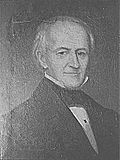
Henry Hubbard
(Charlestown) | Jack | Elected in 1829.
Re-elected in 1831.
Re-elected in 1833.
Retired to run for U.S. senator. | John W. Weeks
(Lancaster) | Jack | Elected in 1829.
Re-elected in 1831.
Retired. |
|---|
March 4, 1831 –
March 3, 1833 | 22nd | 
Joseph M. Harper
(Canterbury) | Jack | Elected in 1831.
Re-elected in 1833.
Retired. |
|---|
March 4, 1833 –
March 3, 1835 | 23rd | 
Benning M. Bean
(Moultonborough) | Jack | Elected in 1833.
Re-elected in 1835.
Retired. | Robert Burns
(Plymouth) | Jack | Elected in 1833.
Re-elected in 1835.
Retired. | 
Franklin Pierce
(Hillsborough) | Jack | Elected in 1833.
Re-elected in 1835.
Retired to run for U.S. Senator. | Seat eliminated |
|---|
March 4, 1835 –
March 3, 1837 | 24th | 
Samuel Cushman
(Portsmouth) | Jack | Elected in 1835.
Re-elected in 1837.
Retired. | Joseph Weeks
(Richmond) | Jack | Elected in 1835.
Re-elected in 1837.
Retired. |
|---|
March 4, 1837 –
March 3, 1839 | 25th | 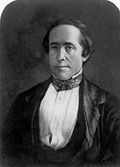
Charles G. Atherton
(Nashua) | Dem | Elected in 1837.
Re-elected in 1839.
Re-elected in 1841.
Retired to run for U.S. senator. | James Farrington
(Rochester) | Dem | Elected in 1837.
Retired. | 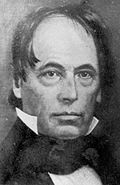
Jared W. Williams
(Lancaster) | Dem | Elected in 1837.
Re-elected in 1839.
Retired. | Dem | Dem |
|---|
March 4, 1839 –
March 3, 1841 | 26th | 
Edmund Burke
(Newport) | Dem | Elected in 1839.
Re-elected in 1841.
Re-elected in 1843.
Retired. | 
Ira Allen Eastman
(Gilmanton) | Dem | Elected in 1839.
Re-elected in 1841.
Retired. | Tristram Shaw
(Exeter) | Dem | Elected in 1839.
Re-elected in 1841.
Retired. |
|---|
March 4, 1841 –
March 3, 1843 | 27th | John Randall Reding
(Haverhill) | Dem | Elected in 1841.
Retired. |
|---|
March 4, 1843 –
March 3, 1845 | 28th | 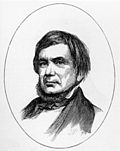
Moses Norris Jr.
(Pittsfield) | Dem | Elected in 1843.
Re-elected in 1845.
Retired. | 
John P. Hale
(Dover) | Dem | Elected in 1843.
Lost re-election. | Seat eliminated. |
|---|
March 4, 1845 –
March 3, 1847 | 29th | 
Mace Moulton
(Manchester) | Dem | Elected in 1845.
Redistricted to the 3rd district and lost re-election. | James Hutchins Johnson
(Bath) | Dem | Elected in 1845.
Redistricted to the 4th district . | Vacant.
No candidate received a majority of votes. |
|---|
Years & Cong
ress | Rep. | Party | Electoral history | Rep. | Party | Electoral history | Rep. | Party | Electoral history | Rep. | Party | Electoral history | Rep. | Party | Electoral history | Rep. | Party | Electoral history |
|---|
| Seat A | Seat B | Seat C | Seat D | Seat E | Seat F |
|---|


































